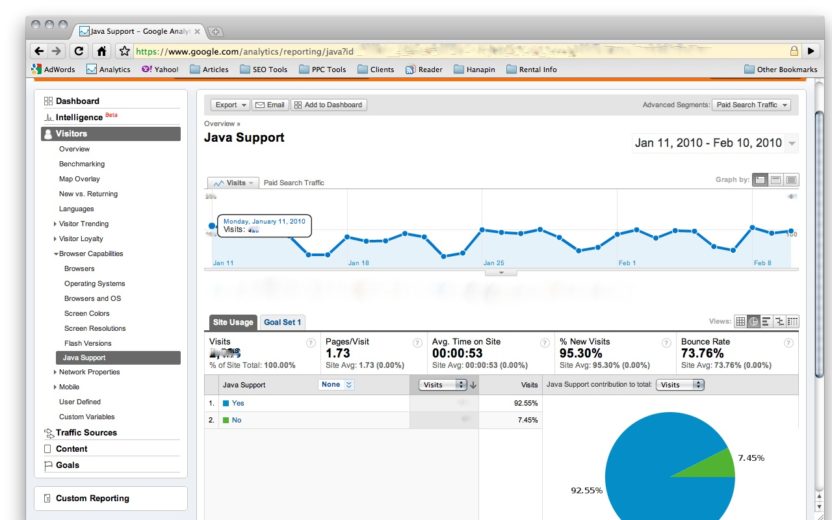Google Analytics is instrumental in the way we track the success of our PPC campaigns (especially since it’s free), but as robust as it is, there are certain visitors that just can’t be tracked. There are at least 6 types of those visitors, but today I’m going to focus solely on those that have their JavaScript turned off, and what it can mean for your PPC campaigns.
What is JavaScript?
JavaScript in the simplest sense is a scripting language that uses browsers to do the work for a command. It can be used to dynamically generate many types of elements on a page, but today I’d like to focus on one particular example.
We have a client who receives their leads via phone. For all online marketing campaigns, they direct visitors to a single landing page that uses JavaScript to automatically show a designated phone number to anyone visiting from each of their PPC, SEO, and email marketing campaigns.
How JavaScript Can Affect Your Tracking
Though few people know how to, it is possible for an end user to turn off their JavaScript, and this will certainly affect the accuracy of lead tracking for anyone using a method similar to our client’s. The primary problem, from a lead attribution standpoint, is that these users will not be shown the PPC phone number, so if they call and convert, that lead will be attributed to a general campaign instead.
To further complicate matters, once a user has their JavaScript turned off, they are untraceable in Analytics, so you will not only lose the data on who is seeing the correct information, but you won’t know that they visited your site in the first place. If you are noticing that your leads are low, you might want to check your web server logs, and compare the number of visitors to your landing page to the number that Analytics shows. This would at least give you an idea of how many people you aren’t tracking in Analytics, and since the reason is likely that their JavaScript is turned off, you would also know that they didn’t see your dynamic information. The downside of course is that you won’t know where they came from, nor how many of them converted, so you would have to make a business rule about how many of the leads were attributed to each of your advertising efforts from the bucket of “untracked” visitors, which compromises accuracy.
If you find that you are having tracking issues due to a lack of JavaScript support, there are different solutions available, depending on your time and budget. Making individual landing pages for different online marketing campaign types would help, because you eliminate the need for dynamic content. If using JavaScript is the most efficient solution for you or your client, make sure that both parties are aware of the potential lead discrepancy caused by JavaScript-disabled users. You should also ensure that the default landing page is unique from all other pages so you will still be able to create lead attribution estimates as described above.
No matter what type of campaign you run, it’s important to understand who is seeing your ads, and reacting to them. Using your PPC data in conjunction with your web server and Analytics data will help you gain a better understanding of the full user experience, and help you effectively track customers while fulfilling their needs.
This post has been edited from it’s original version based on continued research.




